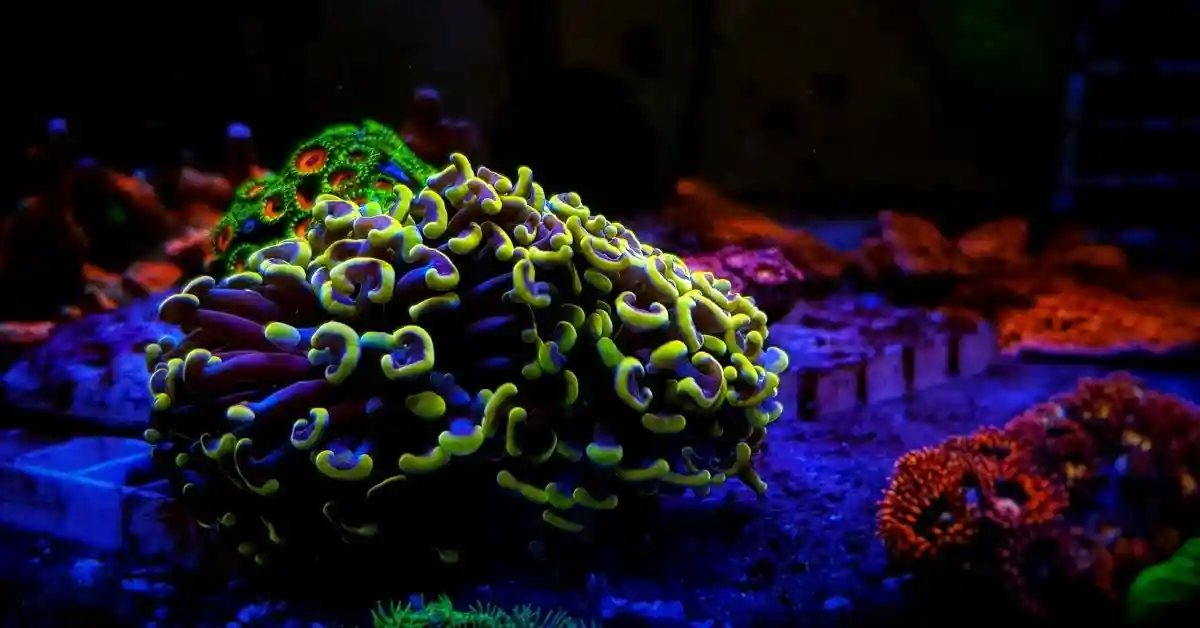So you have a hammer coral in your aquarium. But it’s not opening, and now you’re concerned that you’re not taking care of it correctly? Don’t dwell on it too much.
We’ve all the information you’ll need to unlock the hammer coral.
Why is your hammer coral not opening?
Hammer coral is a popular big polyp solid coral species. It has the proper raw components to produce a wonderful next coral for the aquarium. T
hey develop their stone corals’ structure, have strong, gorgeous, streaming polyps, and are photosynthesis. They can be fragged reasonably simply and can grow even faster if nourished.
Let’s understand why hammer coral is not opening in an aquarium!
Why is Hammer Coral Not Opening?
Let’s explore why the hammer coral is not opening. There might be various reasons why your hammer coral isn’t working properly.
First of all, there could be a problem with their aquarium environment, the positioning of the coral, whether it is absorbing enough light or not, and whether or not the flow of water in the aquarium is proper.
Whether or whether you’re feeding properly. It’s effortless to care for them; just follow simple rules.
Let’s talk about it in further detail.
Proper Hammer Coral Aquarium Conditions
To care for Hammer corals in a marine aquarium, you’ll need some experience.
Euphyllia Ancora, like many other coral species, demands steady marine water tank temperatures, is intolerant of large changes in water quality, and is sensitive to nearly any quantity of copper in the water.
Calcium and alkalinity are two crucial water variables affecting their growth because they are large polyp stony coral.
If the calcium levels go too low, this coral will begin to die. A calcium level of around 400 ppm is ideal. The majority of hobbyists maintain adequate calcium levels by:
- Using a calcium test kit to determine levels
- Making use of a high-quality salt mixture
- Adding extra calcium in the form of a Kalkwasser or a two-part solution.
Natural Environment
Hammer corals are located in the Indian ocean And the pacific. E. Ancora colony can expand to reach about a meter in size in their native environment.
Most colonies in a marine aquarium are much lower. Sadly, the native range has shrunk considerably over the last several years, and it is now listed as fragile on the Endangered Species List.
Whether there is any positive thing here, this is that the branching variant of this coral can be readily clobbered. Thus, wild collecting should never be necessary.
Where Do Place a Hammer Coral in an Aquarium?
When it comes to the right positioning in your reef tank, this coral species isn’t too finicky. The trick would be to steer clear of extremes.
Avoid areas that are too bright or have very strong currents, as well as areas that are too dark or have too low currents.
They often require a little more light than low-lighting species, such as mushroom coral, but not as much as other, more light-hungry species.
Fast currents can potentially harm fragile, fleshy polyps and cause an infection.
Bleaching will occur in the presence of bright lighting. Inadequate illumination will lead the poor coral to wither and die of starvation.
However, you need to have a fairly large footprint of good reef tank real estate in which to situate them.
How Much Light Does a Hammer Coral Require?
Hammer corals require very little light for photosynthesis and can survive in the center of your tank.
Almost any coral LED illumination should be adequate for most aquariums.
Flow of water
The goal is to keep the flow balanced. Consider Goldilocks and the Three Bears.
It’s not too much or too little, but it’s perfect.
The polyps should wobble in the stream but not be under so much strain that they are bent over their skeleton all the time.
The excessive flow will rip the polyps, which will be the worst-case scenario, and preventing the polyps from extending in the first place will be the best case.
As a result, don’t provide them with the excessive flow.
Feeding the Hammer Coral
Corals are all animals. Animals all have one common factor: they like to consume stuff.
The hammer coral is no exception–but unlike some other LPS species, Euphyllia Ancora does not feed voraciously.
Hammer corals are much more reserved feeders who might benefit from adding a fatty marine diet such as Mysis shrimp regularly.
Feeding is a simple process. Insert the soft, fatty food into the polyps using Julian’s or a Sea Squirt feeder.
The coral may consume part of the food that your fish do not steal.
Are hammer corals easy to care for?
The hammer coral is a difficult species to keep alive.
The huge and fragile polyps need consistent water conditions, medium water flow, and frequent feedings.
Furthermore, the requirement to test for and maintain calcium levels greater than 400ppm places these exquisite corals in the intermediate care category.
FAQs
Question: Do Hammers that branch split?
Answer: Branching hammers, indeed, break new heads.
Question: Can Hammer coral recover?
Answer: Hammer coral was the only one that survived but never fully recovered.
Question: Do hammer corals shed their skin?
Answer: No, it’s not typical.
Question: Is it true that corals shrink at night?
Answer: A few corals shrink at night, while others grow much bigger as feeder tentacles emerge. Tree coral and leathers often contract at night and extend once the lights are turned on.
Conclussion
That was all why the hammer coral was not open. We discussed all of the possible reasons in this article, but if you want to learn more, please contact us.

